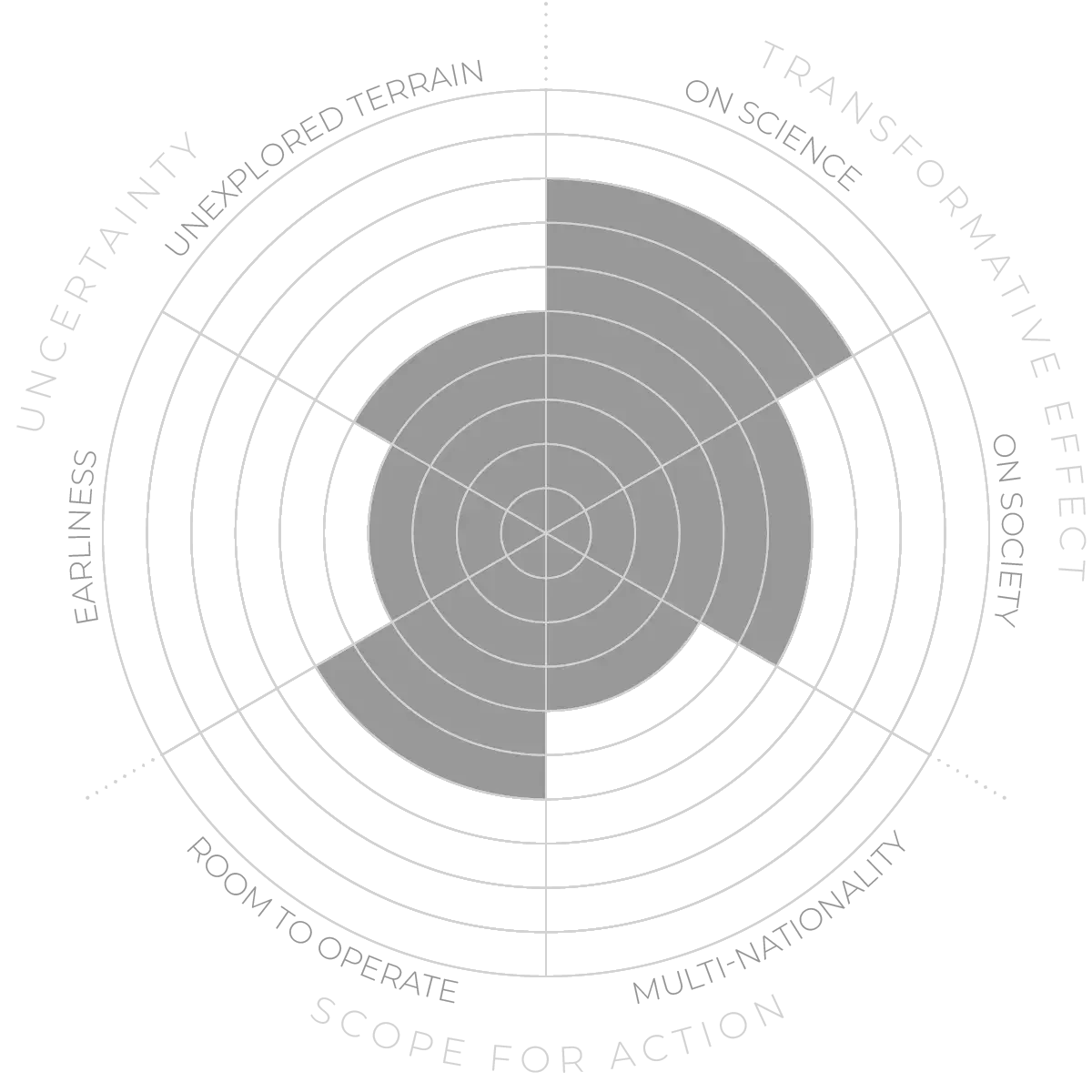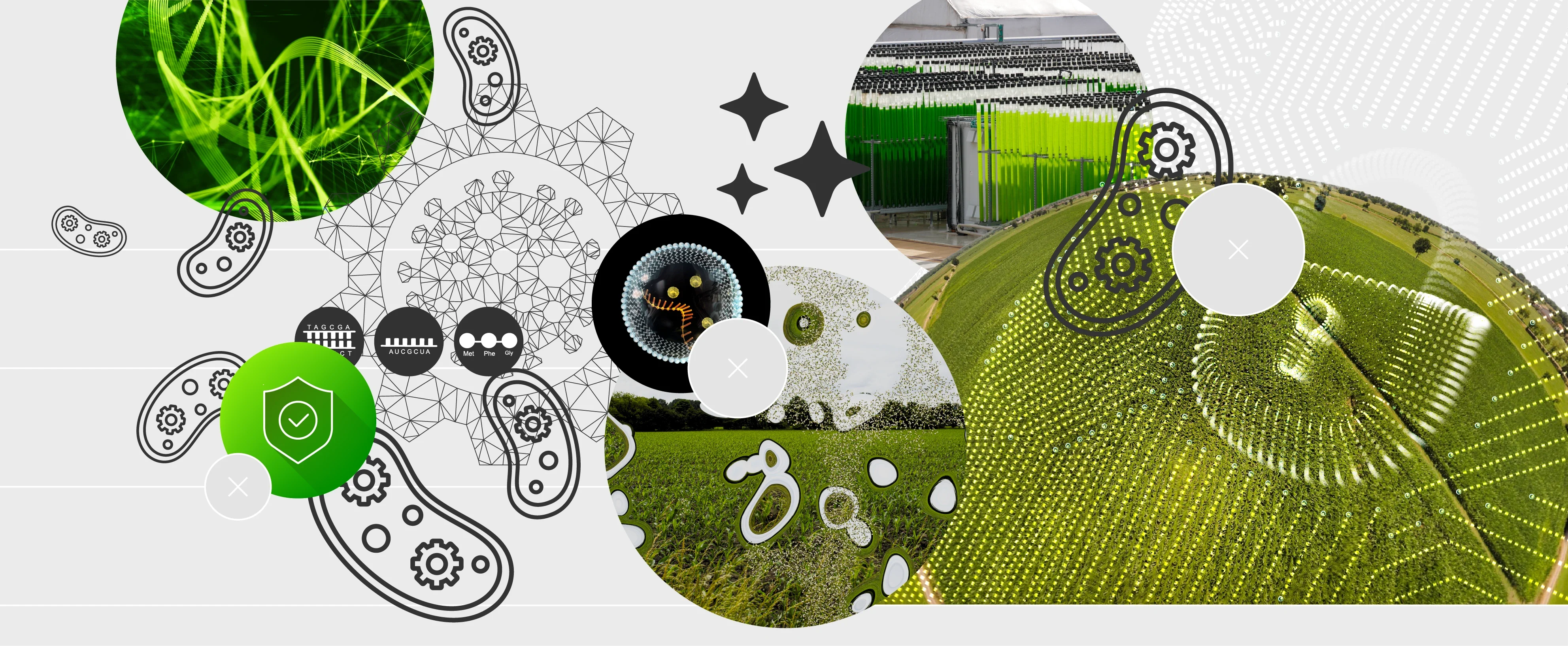Future Horizons:
10-yearhorizon
Synthesis costs fall
25-yearhorizon
AI improves user access for synthesis
A major challenge is to create generic platforms for synthetic biology. These will improve the accessibility of the technology, especially in the developing world, and open the way to more repeatable experiments. Synthetic biology platforms could include artificial vesicles for catalysis of reactions and delivery of molecules,10 programmable systems for glueing proteins,11 and micro-organisms with minimal genomes that are more readily reprogrammed and rationally designed.12 Ecosystems of synthetic organisms also have potential but are under-explored.13
In order to achieve the desired goals quickly and effectively, there is a need to develop new methods of designing synthetic organisms. Multiple avenues are being explored: some focus on designing organisms that exhibit goal-seeking and problem-solving behaviours,14 while others are aiming for an open-ended evolutionary process that will continue to develop and change.15
The opportunities of synthetic biology come with risk. Engineered organisms have considerable potential to harm humans and ecosystems intentionally or accidentally. Hence some synthetic biologists are devising ways to contain their engineered organisms:16 for instance, ensuring organisms can survive only when given a specific chemical that is not found in nature.17 The best strategies will use multiple orthogonal control systems, providing several fail-safes to minimise the chances of escape.18
Fundamental synthetic biomolecules - Anticipation Scores
The Anticipation Potential of a research field is determined by the capacity for impactful action in the present, considering possible future transformative breakthroughs in a field over a 25-year outlook. A field with a high Anticipation Potential, therefore, combines the potential range of future transformative possibilities engendered by a research area with a wide field of opportunities for action in the present. We asked researchers in the field to anticipate:
- The uncertainty related to future science breakthroughs in the field
- The transformative effect anticipated breakthroughs may have on research and society
- The scope for action in the present in relation to anticipated breakthroughs.
This chart represents a summary of their responses to each of these elements, which when combined, provide the Anticipation Potential for the topic. See methodology for more information.



